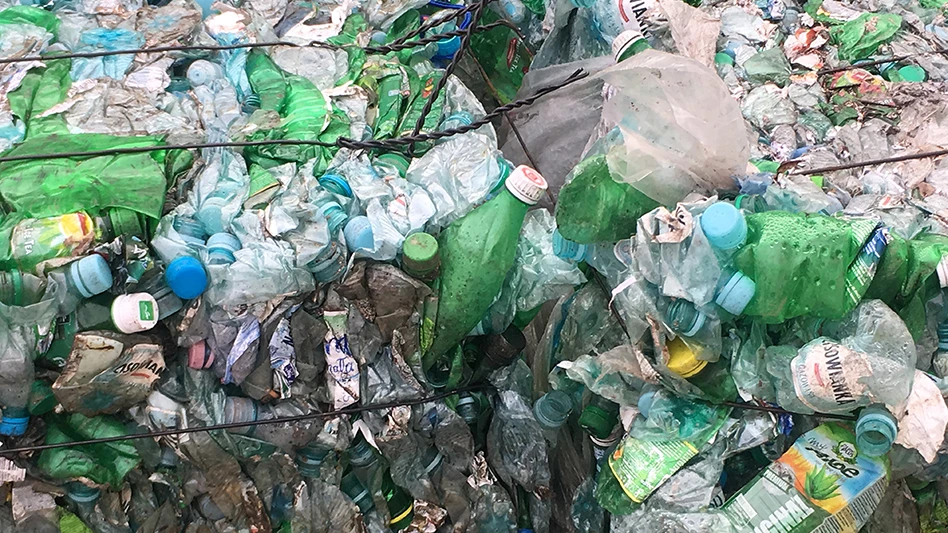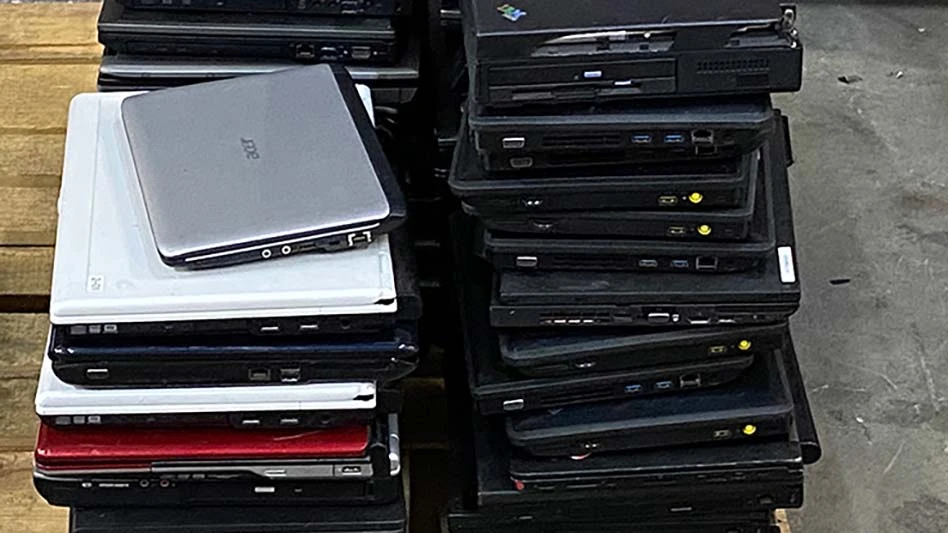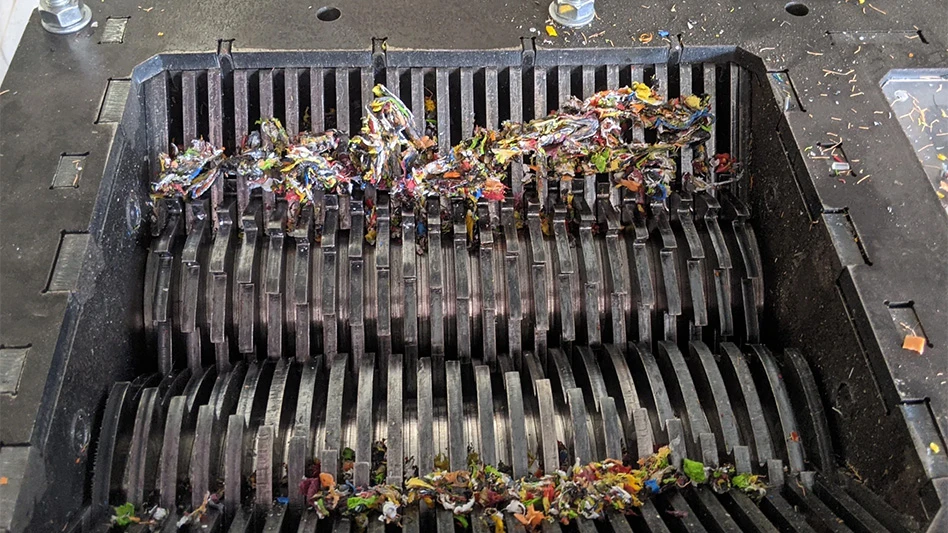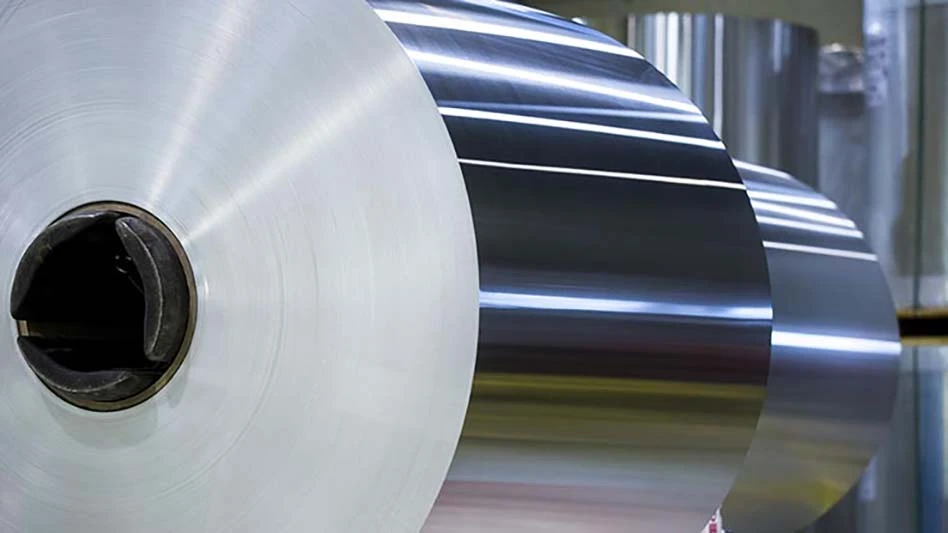
Recycling Today archives
Imagine you sold a product with no control over how much of it was produced at any one time, that you had to sell it within weeks of production regardless of what the demand for it was like and that demand was constantly changing.
For most recycling and waste sector managers, no imagination is required—this is their daily reality. And it’s one of the biggest drivers of volatility throughout the plastic recycling chain globally.
Discarded materials originate from the general public and industry. As a result, the composition and quantity of scrap generated at any one time varies continuously depending on consumer behavior and industrial production trends.
Supply with strings attached
Recycling and waste management firms typically hold contracts with municipalities for collection. They cannot turn material away. Because of variations in consumer and industrial production trends, different countries can have vastly different supply at any one time.
The quality of that input plastic scrap (how contaminated it is, the tensile strength, etc.) depends on a variety of factors, including how it’s been treated and stored before it has entered the chain, the type of additives it contains, what other materials it has come into contact with (because contact with substances such as polyvinyl chloride, or PVC, causes contamination), level of discoloration, gel content and odor.
Coupled with this, the more times a polymer has been recycled, the lower its tensile strength, which typically increasingly limits end-use suitability. How many cycles it takes before the scrap material becomes unusable varies from polymer to polymer, process to process and by level of other degradation.
The longer you store plastic scrap (this is typically, but not exclusively, in the form of bales) without reprocessing it—or selling it on for reprocessing—the more it can degrade.
This can arise from a number of things, including the contaminants it contains, thermolytic degradation (from heat, typically the sun) and hydrolytic degradation (from water, common in the case of polyethylene terephthalate, or PET).
Meanwhile, new (and perhaps more valuable) strains of scrap are constantly entering the chain, and warehouse space is limited.
If the scrap quality is too low, recycling facility managers either must dispose of the material, sell it to the burn-for-energy sector or use it captively for energy creation. Burn-for-energy bales typically sell at negative values, whereby sellers pay for the removal of material based on cost saving against alternative disposal methods.
As a result, most recycling plant managers look to offload bales within four to six weeks (though this varies from market to market).
Sold, but to whom?
Reprocessed recycled plastic material, meanwhile, serves a huge variety of end-use markets. Major offtake markets include but aren’t limited to packaging, construction, automotive, outdoor furniture, refuse bags, strapping and horticulture.
Demand between the end uses also varies dramatically, and players in each market purchase for differing reasons.
Some markets, such as packaging, are driven heavily by brand sustainability targets and regulations. Other markets, such as construction, mostly purchase on cost saving against virgin.
This has huge effects on willingness to pay. Intensifying legislative and consumer pressure on sustainability in packaging over the past few years has seen a significant pricing gap develop between display packaging-suitable and nondisplay packaging-suitable grades across most global recycled polymer markets.
For example, a spread of up to 1,500 euros ($1,628) per metric ton exists between the highest-priced grade of European recycled polypropylene (R-PP) pellet (which is a postconsumer natural grade predominantly used in domestic goods and cosmetic applications) and the lowest-priced grade (which are black injection-molded pellets that typically serve nonpackaging applications).
Ideally (from their point of view) recycling plant managers and reprocessors would primarily serve applications driven by sustainability targets where premiums are typically highest.
Nevertheless, each downstream market has differing technical requirements, with display packaging and automotive typically having the strictest technical requirements and construction, bin bags and outdoor furniture the lowest. This means that typically a higher volume of material is sold into nonpackaging applications.
Mixing and matching for profitability
While sorting allows facility managers to extract high-value fractions and, to an extent, control contaminants, it doesn’t control the input material mix.
So, the type of material suitable to serve each application is changing constantly. Feedstock scrap quality and reprocessed output quality are directly correlated for the mechanical and chemical recycling of plastics.
This creates a continuous supply/demand mismatch that often is underappreciated by players newly entering the market.
This mismatch coupled with the need to offload material relatively quickly is the reason, for example, 90 percent mixed polyolefin bale prices have traded as high as 600 euros ($651) per metric ton ex-works in northwest Europe or as low as zero euros per metric ton ex-works northwest Europe since July 2022.
Because plastic scrap fractions typically produce a variety of different flake and pellet grades depending on what is extractable from individual bales, and especially for recycled polyolefins, they typically react to systemwide demand in each locality.
Individual flake and pellet prices, though, often react to demand from specific end-use markets. This can result in periods where bale prices are high, but prices for some flake and pellet grades those bales serve are low, resulting in squeezed margins.
This is especially true for grades that are purchased for cost-saving reasons, meaning they need to aggressively compete with virgin and off-spec material.
The reverse also regularly occurs, whereby bale prices can be low because demand in key end uses such as construction is weak and general availability of material is high while volumes extracted for packaging-suitable grades are limited and demand from that particular sector is firm.
It is also increasingly common for material with broadly identical specifications to trade at different price levels depending which sector it is being sold into.
Further distortions in the chain are created because reprocessed material such as flakes and pellets can be stored for long times, and flake and pellet producers are not forced to offload material as quickly as recycling plant managers.
This leads to fragmented and localized downstream markets where spreads against feedstock costs and profitability are constantly shifting.
Volatile feedstock costs also result in challenges for investment. This is particularly true for emerging technologies such as chemical recycling and bio-based plastics.
That is because new producers seeking private investment are often required to project future costs (typically for at least five years), with scrap feedstock typically their largest variable cost. The unpredictability of scrap values makes this a herculean task.
When players first explore circular plastic markets they often are surprised by the variability and fragmentation of prices through the chain. In the majority of cases, the direct cause can be traced back to the collected scrap feedstock markets.
ICIS assesses more than 100 grades throughout the recycled plastic value chain globally, from scrap bales through to pellets. This includes recycled polyethylene (R-PE), recycled PET (rPET), R-PP, mixed plastic scrap and pyrolysis oil.
Oct. 1, ICIS launched a recycled polyolefins agglomerate price range as part of its Mixed Plastic Waste and Pyrolysis Oil (Europe) pricing service. For more information on these and other products, the ICIS recycling team can be contacted at recycling@icis.com.
Mark Victory is a senior editor, recycling, at London-based Independent Commodity Intelligence Services (ICIS), which offers its services in the chemicals, energy and fertilizer markets.
Latest from Recycling Today
- University researchers create ‘low-cost’ plastic recycling method
- Biden administration delays enforcement of order blocking Nippon Steel, US Steel transaction
- Singapore researchers develop flame retardant removal process
- Getting mixed results
- Norsk Hydro buys remaining shares of Hydrovolt
- The Scrap Show: Dhawal Shah of Metco Ventures LLP
- AEPW releases new mechanical recycling ‘playbook’
- Nucor to expand downstream products capacity





